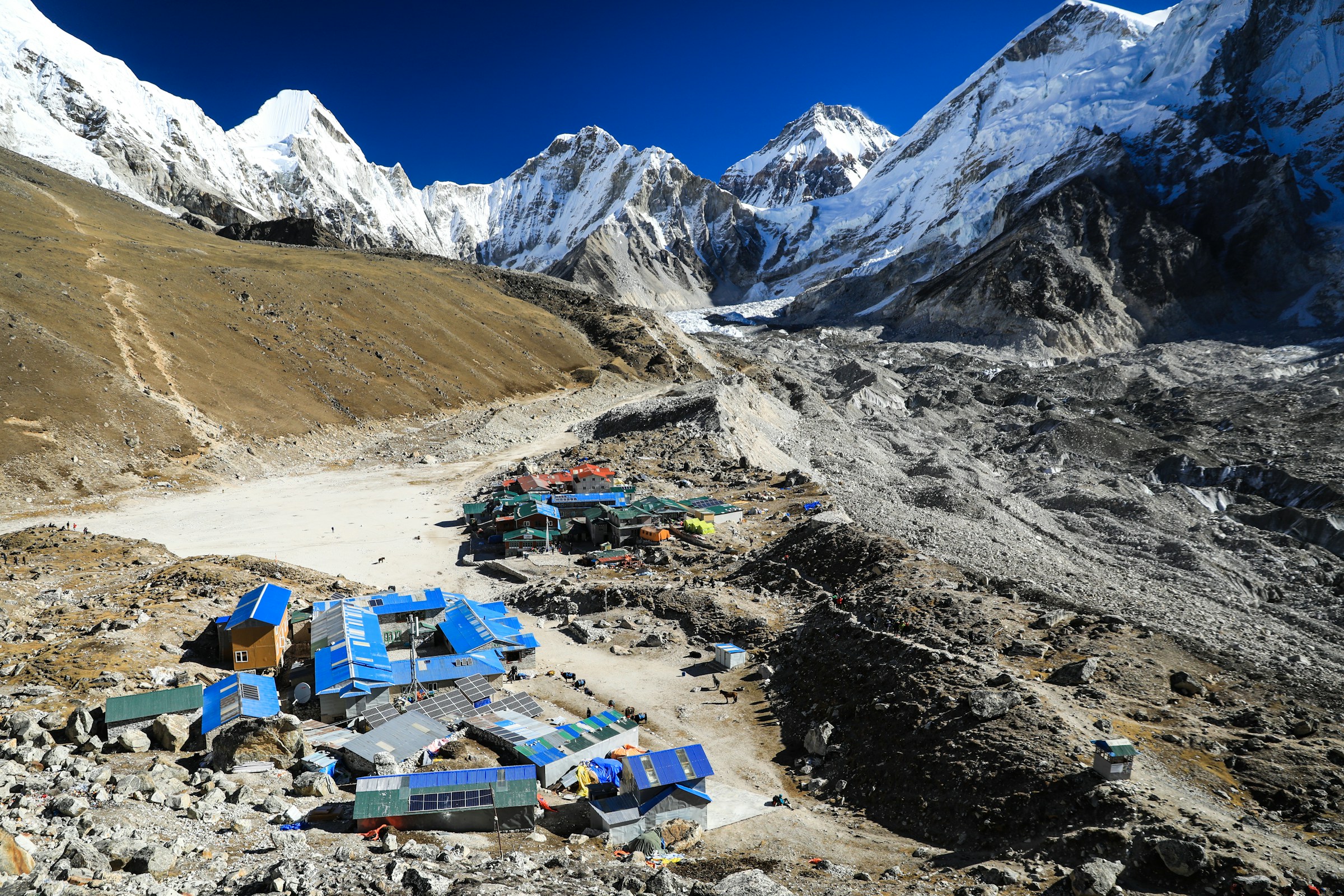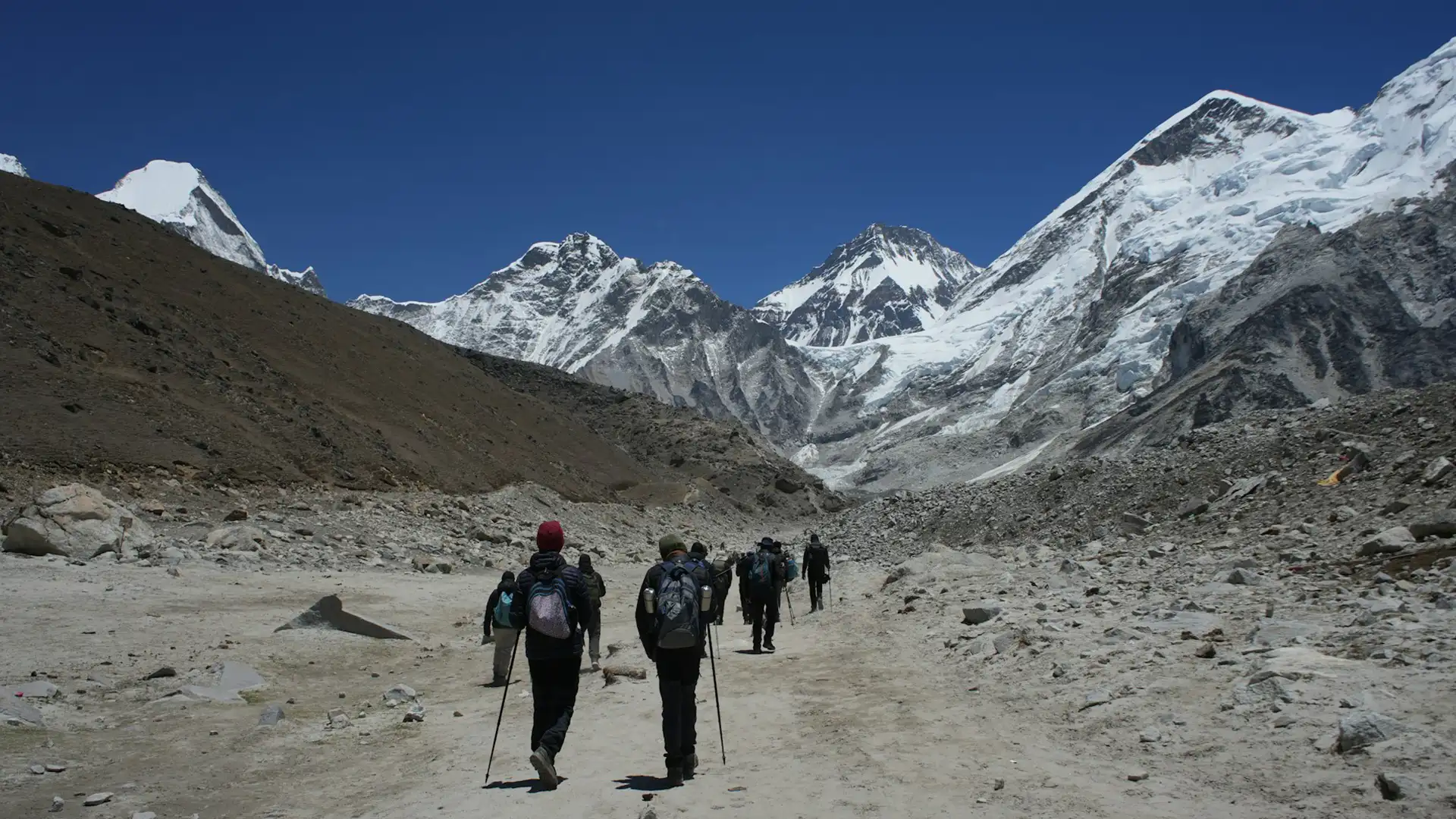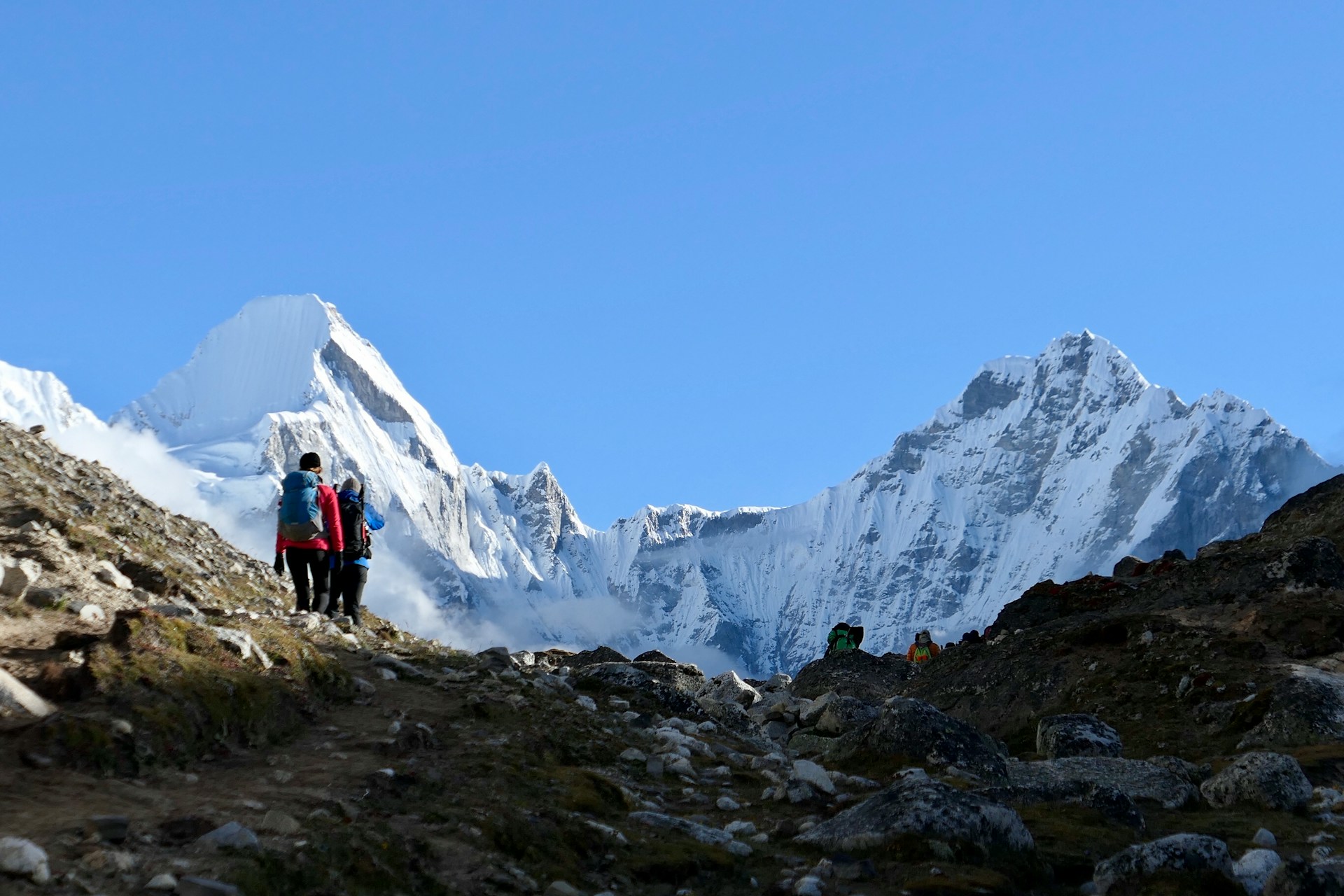As you prepare for your journey to explore the majestic landscapes of Nepal in 2025, understanding the essentials is crucial.
To ensure a smooth and enjoyable experience, it’s vital to secure the necessary permits. Researching the required documentation and regulations will help you avoid any last-minute hassles.
Packing the right gear is also essential. From sturdy hiking boots to layers for varying climates, being prepared will make your trek more enjoyable. As a beginner, understanding how to plan your first trek effectively will set you up for success.
With the right preparation and mindset, your trekking experience in 2025 will be unforgettable.
Why Nepal Should Be Your Trekking Destination in 2025
With its diverse landscapes and rich cultural heritage, Nepal is an ideal trekking destination for 2025. The country’s unique appeal lies in its Himalayan trekking routes, which offer breathtaking views, diverse ecosystems, and authentic cultural experiences.
The Unique Appeal of Himalayan Trekking
Nepal’s Himalayan region is home to some of the world’s most spectacular trekking trails, including the Everest Base Camp and Annapurna Circuit. These treks offer diverse landscapes, from lush forests to high-altitude deserts, and cultural immersion with local communities.
What Makes 2025 an Ideal Year for Nepal Trekking
2025 is expected to be a great year for Nepal trekking due to anticipated stable weather conditions and fewer trekkers compared to peak years. This makes it an ideal time for beginners to explore Nepal’s trekking trails without the crowds, allowing for a more personal and immersive experience.
Before planning your trip, it’s essential to know the best time to trek Nepal as a beginner in 2025 and things to know before trekking Nepal 2025, ensuring a well-prepared and enjoyable adventure.
Best Beginner Treks in Nepal for 2025
Nepal offers numerous trekking options for beginners in 2025, with several routes catering to different interests and fitness levels. The country is renowned for its Himalayan landscapes, rich cultural heritage, and welcoming communities, making it an ideal destination for those new to trekking.
Everest Base Camp Trek: The Classic Choice
The Everest Base Camp Trek is one of Nepal’s most iconic routes, attracting trekkers from around the world. It offers stunning views of the highest mountain in the world, along with a unique cultural experience through the Sherpa villages. While it’s a popular trek, beginners can successfully complete it with proper preparation and acclimatization.
Annapurna Circuit: Diverse Landscapes for First-Timers
The Annapurna Circuit is another highly recommended trek for beginners, offering diverse landscapes from lush green valleys to arid desert-like regions. This trek provides a comprehensive Nepalese experience, with varying terrains and climates, preparing trekkers for the challenges of Himalayan trekking.
Langtang Valley: The Perfect Short Trek
For those with limited time, the Langtang Valley trek is an excellent choice. It’s a relatively short trek that still offers breathtaking views of the Langtang range and a glimpse into the local Tamang culture. The trek is considered moderately easy, making it suitable for beginners.
Poon Hill: Ideal for Spectacular Views with Minimal Difficulty
Poon Hill is a great option for beginners looking for a trek with minimal difficulty but maximum scenic reward. The trek offers panoramic views of the Annapurna range at sunrise, making it a memorable experience. It’s a short trek, typically completed in a few days, and is considered one of the easiest treks in Nepal.
Each of these treks offers a unique experience, and beginners can choose based on their interests, time, and fitness level. Proper preparation and guidance can ensure a successful and enjoyable trekking experience in Nepal in 2025.
Understanding Nepal Trekking Permits 2025
To ensure a smooth trekking experience in Nepal in 2025, understanding the necessary permits is key. Nepal has implemented various permit systems to manage and conserve its rich natural resources and cultural heritage.
TIMS Card Requirements and Process
The TIMS (Trekker’s Information Management System) card is mandatory for all trekkers in Nepal. It helps track trekkers’ movements and ensures their safety. The TIMS card can be obtained through registered trekking agencies or directly at the Nepal Tourism Board office in Kathmandu or Pokhara.
Conservation Area Permits Explained
Many trekking routes pass through conservation areas, which require Conservation Area Permits (CAPs). These permits help in the conservation of wildlife and their habitats. The fees collected from CAPs are used for conservation efforts.
Special Permits for Restricted Areas
Some areas in Nepal are restricted due to their sensitive nature or proximity to international borders. Special permits are required for these areas, and they often involve additional documentation and fees.
Where and How to Obtain Permits in Kathmandu
Permits can be obtained in Kathmandu at the Nepal Tourism Board office or through registered trekking agencies. It’s advisable to check the latest requirements and regulations before your trip, as they can change.
Best Seasons for Trekking in Nepal for Beginners
As a beginner, understanding the best seasons for trekking in Nepal is essential for a safe and enjoyable experience. Nepal’s diverse climate means that the weather can vary significantly depending on the season, impacting your trekking experience.
Spring Trekking (March-May): Pros and Considerations
Spring is one of the best times to trek in Nepal, offering mild temperatures and clear mountain views. The rhododendron forests are in bloom, adding vibrant colors to the landscape. However, it’s also a popular season, so trails can be busier.
Autumn Trekking (September-November): Peak Season Benefits
Autumn is considered the peak trekking season in Nepal. The weather is generally stable, with clear skies and comfortable temperatures. This season provides optimal conditions for trekking, with the added benefit of cultural festivals like Dashain.
Winter and Monsoon: Should Beginners Consider These Seasons?
Winter and monsoon seasons present challenges for trekkers. Winter brings cold temperatures, especially at higher altitudes, while the monsoon season is characterized by heavy rainfall and potential landslides. Beginners are generally advised to avoid these seasons due to the increased difficulty and safety risks.
Essential Gear: Nepal Trekking Packing Checklist for 2025
As you prepare for your Nepal trek in 2025, having the right gear is crucial for a successful and enjoyable journey. A well-packed trekker is better equipped to handle the challenges of high-altitude trekking in the Himalayas.
Clothing Essentials: Layering for Himalayan Weather
Layering is key when it comes to clothing for Nepal trekking. Pack moisture-wicking base layers to keep you dry, insulating mid-layers for warmth, and waterproof outer layers to protect against the elements. Consider the season you’re trekking in and adjust your packing list accordingly.
Footwear: Selecting the Right Boots for Your Trek
Good quality trekking boots are essential for Nepal trekking. Look for boots that are waterproof, ankle-high, and have good tread. Make sure they are comfortable and broken in before your trek to avoid blisters.
Backpacks and Bags: What Size and Features You Need
A good quality backpack is vital for carrying your gear. Consider a pack with a capacity of 30-40 liters for day trips and 60-80 liters for longer treks. Look for features like multiple compartments, rain covers, and comfortable straps.
Electronics and Accessories: Power Banks, Cameras, and More
Don’t forget to pack essential electronics like power banks, cameras, and portable chargers. Consider the altitude and weather conditions when selecting your electronics, and pack accordingly.
By following this Nepal trekking gear checklist, you’ll be well-prepared for your adventure in 2025. Remember to check the weather forecast before your trip and adjust your packing list accordingly.
Physical Preparation: How to Train for Your Nepal Trek
Embarking on a Nepal trek requires more than just the right gear; it demands physical preparation. To ensure a successful and enjoyable trekking experience, it’s essential to start training well in advance. A well-structured training plan will help you build the necessary endurance and strength to tackle the challenging Himalayan terrain.
Cardiovascular Training Schedule (3-6 Months Before)
A good cardiovascular training schedule is crucial for building the endurance needed for long trekking days. Aim for at least 30 minutes of moderate-intensity aerobic exercise, such as brisk walking, cycling, or swimming, three to four times a week. Gradually increase the duration and intensity of your workouts over time to build up your stamina.
Strength Training for Mountain Terrain
In addition to cardiovascular fitness, strength training is vital for tackling the uneven terrain and steep inclines encountered on Nepal treks. Focus on exercises that strengthen your legs, such as squats, lunges, and leg press. Incorporating strength training into your routine two to three times a week will help improve your overall trekking performance.
Altitude Preparation and Acclimatization Strategies
Altitude sickness is a significant concern for trekkers in Nepal. To mitigate this risk, it’s crucial to acclimatize properly. Ascend gradually, allowing your body to adjust to higher elevations. Include rest days in your itinerary, and consider ascending to a higher altitude for a day before returning to a lower elevation to sleep. This “climb high, sleep low” strategy can be beneficial.
Trekking in Nepal for Beginners: What to Expect on the Trail
As you prepare for your first trek in Nepal, understanding the trail experience is crucial for a successful and enjoyable journey. Trekking in Nepal for beginners can be a thrilling adventure, with breathtaking landscapes and warm hospitality from the locals.
Typical Daily Routine During Your Trek
A typical day on the trek usually starts early, around 6-7 am, with a hearty breakfast at your tea house. You’ll then begin your hike, taking regular breaks to enjoy the scenery and rest. The day’s trekking can last anywhere from 5 to 7 hours, depending on the terrain and your pace.
Tea House Accommodations and Facilities
Tea houses along the trekking routes offer basic yet comfortable accommodations. You can expect simple rooms with shared bathrooms and communal dining areas. The facilities are generally clean, and the owners are friendly and welcoming.
Key Amenities:– Basic rooms with shared bathrooms
– Communal dining areas serving local and international cuisine
– Common lounge areas for relaxation
Trail Difficulty and Terrain Variations
The difficulty of the trek can vary significantly depending on the route. Some trails are relatively easy, while others can be challenging, with steep ascents and descents. The terrain can range from lush forests to high-altitude landscapes.
Connectivity and Communication Options
Along many trekking routes, you’ll find tea houses and lodges with Wi-Fi and charging facilities for a fee. Mobile phone coverage is available on most routes, although it can be patchy in remote areas. It’s a good idea to purchase a local SIM card or rent a portable Wi-Fi hotspot for better connectivity.
Understanding these aspects of trekking in Nepal can help you prepare better and make the most of your adventure. With the right mindset and preparation, your trekking experience in Nepal is sure to be memorable.
Health and Safety Considerations for First-Time Nepal Trekkers
First-time trekkers to Nepal must be aware of several health and safety considerations to ensure a smooth journey. Trekking in the Himalayas can be challenging, and being prepared is key to a successful and enjoyable trip.
Essential Medications and First Aid Supplies
Packing the right medications and first aid supplies is crucial. Always carry personal medications and a basic first aid kit that includes items like band-aids, antiseptic wipes, pain relievers, and any medications for altitude sickness.
It’s also wise to consult with your doctor before traveling to Nepal, especially if you have pre-existing health conditions.
Altitude Sickness: Prevention and Treatment
Altitude sickness is a significant risk when trekking in Nepal, particularly at higher elevations. Understanding the symptoms and taking preventive measures can help mitigate this risk.
Prevention includes gradual ascent, staying hydrated, and considering medications like Diamox.
Travel Insurance Requirements for Trekking in Nepal
Having the right travel insurance is a must for trekking in Nepal. Ensure your policy covers emergency medical evacuations, as these can be extremely costly.
Check the policy details to understand what is covered and what is not.
Drinking Water Safety and Purification Methods
Access to safe drinking water is crucial to avoid waterborne illnesses. Use water purification methods such as filters, boiling, or purification tablets to ensure the water is safe to drink.
Carrying a refillable water bottle and using water purification methods can significantly reduce the risk of getting sick.
Budgeting for Nepal Trekking 2025
Budgeting for a Nepal trek in 2025 can be challenging, but with the right information, you can prepare effectively. To ensure a smooth and enjoyable trekking experience, it’s essential to understand the various costs involved.
Typical Costs: Permits, Guides, and Accommodations
The cost of Nepal trekking permits 2025 varies depending on the trekking route and duration. For popular treks like Everest Base Camp, permits can range from $30 to $100 or more per person. Hiring a guide can add to the cost, with prices starting from $25 to $30 per day. Accommodation costs in tea houses vary, but you can expect to pay between $5 to $15 per night for a basic room.
Daily Expenses on the Trail
Daily expenses on the trail include food, beverages, and other incidentals. A meal can cost between $5 to $15, and it’s a good idea to budget an additional $10 to $20 per day for snacks and drinks. Other expenses may include equipment rental, hot showers, and charging electronic devices.
Money-Saving Tips Without Compromising Safety
To save money without compromising safety, consider trekking during the off-season, choosing budget-friendly accommodations, and preparing your own snacks. It’s also advisable to hire a guide or join a group tour, as this can help split costs and enhance the overall experience.
Guide vs. Solo: Options for Your First Nepal Trek
When planning your first trek in Nepal, one of the key decisions you’ll make is whether to go solo or hire a guide. Both options have their advantages and considerations, especially for beginners.
Benefits of Hiring a Professional Guide
Hiring a professional guide can significantly enhance your trekking experience. Guides are knowledgeable about the terrain, weather conditions, and local culture, ensuring a safer and more enriching journey. They can also assist with navigation, language barriers, and emergency situations, providing peace of mind for first-time trekkers.
Key benefits include: expert knowledge of the terrain and weather, assistance with language barriers, and enhanced safety.
Is Solo Trekking in Nepal Safe for Beginners?
Solo trekking in Nepal can be safe for beginners if proper precautions are taken. It’s essential to research the trekking route thoroughly, stay informed about weather conditions, and be prepared for emergencies. However, solo trekking may not be suitable for everyone, especially in remote or high-altitude areas.
Joining Group Treks: Pros and Considerations
Joining a group trek is another viable option for first-time trekkers. This approach offers the benefits of camaraderie, shared experiences, and potentially lower costs due to group discounts on guides and accommodations. It’s also a great way to gain trekking experience and build confidence for future solo adventures.
Consider the following: group dynamics, cost-effectiveness, and the opportunity to learn from more experienced trekkers.
Conclusion: Taking the First Step on Your Nepal Trekking Journey
Embarking on a trekking adventure in Nepal can be a life-changing experience, especially for beginners. As we have explored, Nepal trekking2025 offers a unique blend of natural beauty, cultural richness, and trekking diversity. From the Everest Base Camp Trek to the scenic Langtang Valley, there are numerous trails suitable for those new to trekking.
To ensure a successful and enjoyable trek, it’s essential to be well-prepared. This includes obtaining the necessary permits, packing the right gear, and training physically. Understanding the best seasons for trekking in Nepal, such as spring and autumn, can also enhance your experience. For those considering trekking in Nepal for beginners, hiring a guide or joining a group trek can provide valuable support and insights.
With careful planning and preparation, your Nepal trekking journey in2025 can be a rewarding and unforgettable experience. Take the first step today by choosing your trek, preparing your gear, and getting ready to immerse yourself in the breathtaking landscapes of the Himalayas.
FAQ
What are the necessary permits for trekking in Nepal in 2025?
The necessary permits for trekking in Nepal in 2025 include the TIMS card, Conservation Area Permits, and special permits for restricted areas. The specific permits required depend on the trekking route and region.
What is the best time to trek in Nepal as a beginner in 2025?
The best seasons for trekking in Nepal for beginners are spring (March-May) and autumn (September-November). These seasons offer favorable weather conditions and scenic landscapes.
How do I prepare physically for a Nepal trek?
To prepare physically for a Nepal trek, start with cardiovascular training 3-6 months before your trek, incorporate strength training for mountain terrain, and learn about altitude acclimatization strategies.
What are the essential items to pack for trekking in Nepal?
Essential items to pack for trekking in Nepal include layered clothing for varying weather, sturdy trekking boots, a suitable backpack, electronics like power banks and cameras, and personal hygiene items.
Is solo trekking in Nepal safe for beginners?
While solo trekking in Nepal can be done, it’s generally recommended for beginners to hire a professional guide or join a group trek to ensure safety and navigate challenging terrain.
What are some beginner-friendly treks in Nepal for 2025?
Beginner-friendly treks in Nepal for 2025 include the Everest Base Camp Trek, Annapurna Circuit, Langtang Valley, and Poon Hill. These treks offer scenic views and relatively manageable terrain for first-timers.
How do I obtain the necessary permits for trekking in Nepal?
Permits for trekking in Nepal can be obtained in Kathmandu through registered trekking agencies or government offices. The TIMS card and Conservation Area Permits are typically arranged through these agencies.
What health and safety considerations should I be aware of when trekking in Nepal?
Health and safety considerations for trekking in Nepal include carrying essential medications and first aid supplies, understanding altitude sickness prevention and treatment, having travel insurance, and ensuring drinking water safety.



